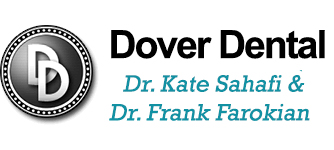Periodontal Disease Risk Factors
Causes and Risk Factors of Periodontal Disease
The healthy mouth is home to more than 350 species of microorganisms. Less than 5 percent are involved in periodontal disease. Normally the harmful bacteria are kept in check by the body’s immune system and good oral hygiene. But in people susceptible to periodontal disease, the harmful bacteria can take over and begin the process that leads to gingivitis and periodontitis. Researchers have shown that increased levels of one species of bacteria called Porphyromonas gingivalis double the risk for serious gum disease. That same species in combination with one other appears to cause periodontal disease in children and young adults.

The Role of Bacteria
Periodontal disease begins when harmful bacteria overcome the antibodies and other anti-bacterial agents the immune system normally sends out to destroy them. These types of bacteria are then free to grow and reproduce. As the harmful bacteria proliferate, they invade the crevices between teeth and gums. There they produce plaque, a soft, sticky substance that can harden and form tartar (calculus). The bacteria in plaque and tartar release substances that trigger the immune system. The immune system responds by mobilizing fibroblasts (connective tissue cells) and a variety of immune cells — including macrophages, monocytes, and lymphocytes — to the site of the infection. This is a normal response that usually helps get rid of an infection. But the infection and immune response can cause gingivitis in red, swollen, inflamed gums.
In periodontitis, bacteria go on to stimulate these inflammatory immune cells to release a series of infection-fighting substances called cytokines. These cytokines t promote inflammation. One of their many jobs is to signal other cells to come to the site and release various substances. This increases inflammation and further damages the gums. Even worse, one cytokine signals a certain type of cell to produce enzymes called matrix metalloproteinases. These enzymes break down collagen in the tissues around the teeth. Collagen is a fibrous material that is a constituent of bone, cartilage, and connective tissue. Its destruction produces deep pockets in between teeth and gums and eventually destroys the structures that hold teeth in place.
Other Risk Factors
Specific species of bacteria must be present for periodontal disease to develop, but usually, other risk factors must be present as well. In fact, 80 percent of people with gum disease have at least one other risk factor that makes them susceptible. Multiple factors are frequently involved. For example, stress, poor diet, smoking, and viral infections all play a role in acute necrotizing gingivitis. Aside from bacteria, age, poor dental hygiene, and poor nutrition, the major risk factors are genetic factors. Studies of identical twins, family histories, and genetic diseases all point to heredity as a risk factor in roughly 50 percent of patients with periodontal disease. The heredity factors involved are most likely minor defects in how the immune system operates. People with these abnormalities cannot fight off the bacteria responsible for causing plaque and periodontal disease even with good oral hygiene. Such heredity factors may explain why children of parents with periodontitis are 12 times more likely to harbor these harmful bacteria.
Other Family Factors
Researchers have found that the bacteria that cause gum disease are in the saliva and can pass from one person to another (so never share your toothbrush or use someone else’s). Because of this, the American Academy of Periodontology recommends if one family member has periodontal disease, all family members should be screened for the disease. In the United States, African-Americans and Mexican Americans have a slightly higher risk of developing periodontal disease than Caucasians. These groups also tend to have more advanced diseases. African-American and Mexican-American males have the highest incidence. It’s unclear whether these differences are due to ethnicity or to such factors as level of education and frequency of visits to the dentist.
Smoking
Smoking is the number one environmental/behavioral risk for periodontal disease. The more you smoke, the higher the risk and the more severe the disease. Smokers are much more likely than non-smokers to have tartar form on their teeth, have deeper pockets between the teeth and gums, and lose more of the bone and tissue that support the teeth. In fact, smoking can cause receding gums and bone loss even in the absence of periodontal disease. Studies on how smoking does its dirty work indicate that it has numerous bad effects on the health of gum tissue and the workings of the immune system. For example, smoking suppresses the production of antibodies directed against some harmful bacteria, which allows them to flourish more easily. Smoking also promotes inflammation and increases bone loss. For these reasons, quitting has become an important part of preventing and managing periodontal disease.

Female Hormones
Anything that causes a change in the level of female sex hormones (puberty, menstruation, pregnancy, menopause, and use of oral contraceptives) makes women more susceptible because such changes make the gums more sensitive to irritants and plaque. For example, when progesterone levels are high, say just before menstruation, the blood vessels in the gums dilate, increasing inflammation. This is why some women experience flare-ups of gingivitis a few days before their period begins. The progesterone present in oral contraceptives also blocks the repair of collagen. At menopause, women may experience inflamed gums, oral pain, dry mouth, abnormal tastes, and sensations (salty, metallic, spicy, acidic, sour) in the mouth. The National Women’s Health Resource Center issued a report called The Women’s Guide to Oral Health as part of their “Brush Up On Wellness” campaign. It discusses gum disease in women and offers advice on preventing it.

Medical Conditions
Diabetes mellitus, osteoporosis, inflammatory bowel disease, Down’s syndrome, and AIDS are just some of the conditions that make people more susceptible to periodontal disease. Studies show diabetes increases susceptibility and severity of gum disease by impairing the function of certain immune cells and decreasing the production of collagen and bone. Research now shows the relationship between the two diseases goes both ways. Gum disease may make it more difficult for diabetics to control their blood sugar. The loss of minerals from bones, seen in osteoporosis, is thought to make bones supporting the teeth more vulnerable to bacterial infection, increasing the risk of gum disease and tooth loss.
Medications
Susceptibility to gum disease also can be caused by some medications, including steroids, cyclosporine (an immunosuppressant), oral contraceptives (the ones that contain the synthetic progesterone desogestrel), Dilantin® (an anti-seizure drug) and Procardia® (or nifedipine, a calcium channel blocker used to treat angina). If you are worried about this, talk to your doctor. You should never stop taking prescribed medication on your own.
Stress
Emotional stress may increase your risk for periodontal disease by depressing the immune system, making it more likely for a bacterial infection to take hold. The mechanical stress of grinding and clenching teeth exerts a force on the gums and other supporting tissues and may loosen your teeth. Sometimes a mouth guard worn during sleep is necessary.
Obesity
According to one study, obesity may also predispose a person to gum disease.
